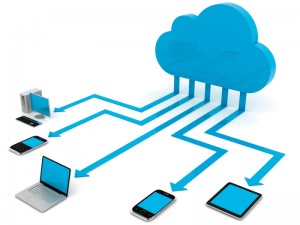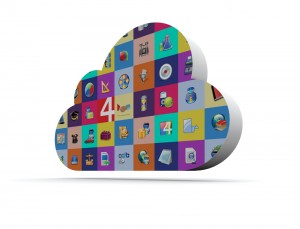Often we hear organizations adopting a cloud solution enjoy many benefits. But what are these benefits all about? How do they apply within the HR arena? Specifically, what benefits does this kind of model offer HR professionals in their daily tasks?
It is an undeniable fact that cloud computing is gradually becoming a reality in many areas of an organization. With cloud technology, the application is hosted on an external server, there’s no need for a local installation con the user side. All the user needs is an internet connection to access the application. The solution provider takes care of the maintenance, making sure it is always available and up to date. Many customers who share a series of common infrastructural and communication elements are hosted in the cloud, thus reducing the costs to access this kind of solution. Each customer contracts an access service from the provider and pays per real use of this service, in contrast to the traditional model where the customer buys a license upfront to use the system.
When we think of HR departments, apart from greater autonomy and reduced costs, the cloud model offers further advantages for people management. Why should we seriously consider the cloud for hosting our HR solution?
In the first place, it ensures faster integration with the rest of the business applications through pre-configured connections to a wide range of business services and products, like recruitment agencies, benefits providers, time management control systems and more. Additionally, cloud solutions are accessible from any device (computer, mobile phone, tablet), no matter where we are geographically. Processes like vacation requests or payslip access can easily be decentralized to employees. For applications this is even more noticeable through enabled approvals and access to information on employees and business units from any location. Likewise the application learning curve for users is reduced; as cloud hosted solutions are generally more intuitive and accessible, demanding less training effort and favoring business growth.
All these advantages are particularly relevant for companies sharing a series of common processes and with broad geographical reach, as is typically the case for multinationals. There are many organizations of this kind which choose to standardize their HR policies through a global technology solution.
 The cloud facilitates rapid solution adoption by all subsidiaries on a worldwide scale. For multinational companies, the cloud speeds up technology adoption by all subsidiaries worldwide, integrating and connecting them together perfectly. This means subsidiaries of the holding group with no previous access to the human capital management system due to other circumstances can subscribe and adopt the set corporate HR practices. At the same time they can maintain their local peculiarities and autonomously manage the processes under their authority.
The cloud facilitates rapid solution adoption by all subsidiaries on a worldwide scale. For multinational companies, the cloud speeds up technology adoption by all subsidiaries worldwide, integrating and connecting them together perfectly. This means subsidiaries of the holding group with no previous access to the human capital management system due to other circumstances can subscribe and adopt the set corporate HR practices. At the same time they can maintain their local peculiarities and autonomously manage the processes under their authority.
This flexibility ensures that the executive management team has a single employee information system right at their fingertips; until now such information was dispersed in local applications in each country. This way, for example, hiring or downsizing the workforce is immediately mirrored in the system, of great consequence in terms of budget planning and investment. A global solution in the cloud clearly helps head offices to define a global HR management model and deploy it in each country where they have company operations, bringing flexibility and control to the business.
Lastly, we must not overlook an important feature that makes an HR cloud solution stand out from previous models: automatic updates. A novelty that impacts both technology investments and the way we work. On one side as we mentioned before, different users of the application cut solution upgrade and maintenance costs which the provider takes care of. On the other side, HR departments benefit from the market best practices that are incorporated gradually into the platform. Besides, the upgrades are directly done by the provider in the cloud, cutting access times for customers. There are cases where this immediate availability is a huge plus as in the case for legal changes.
Our experience shows us that the cloud is the technology needed to accompany HR on the trip into the future as a key stakeholder for making decisions within the organization.
“Six Cloud Benefits for HR professionals”: Get your free paper here






